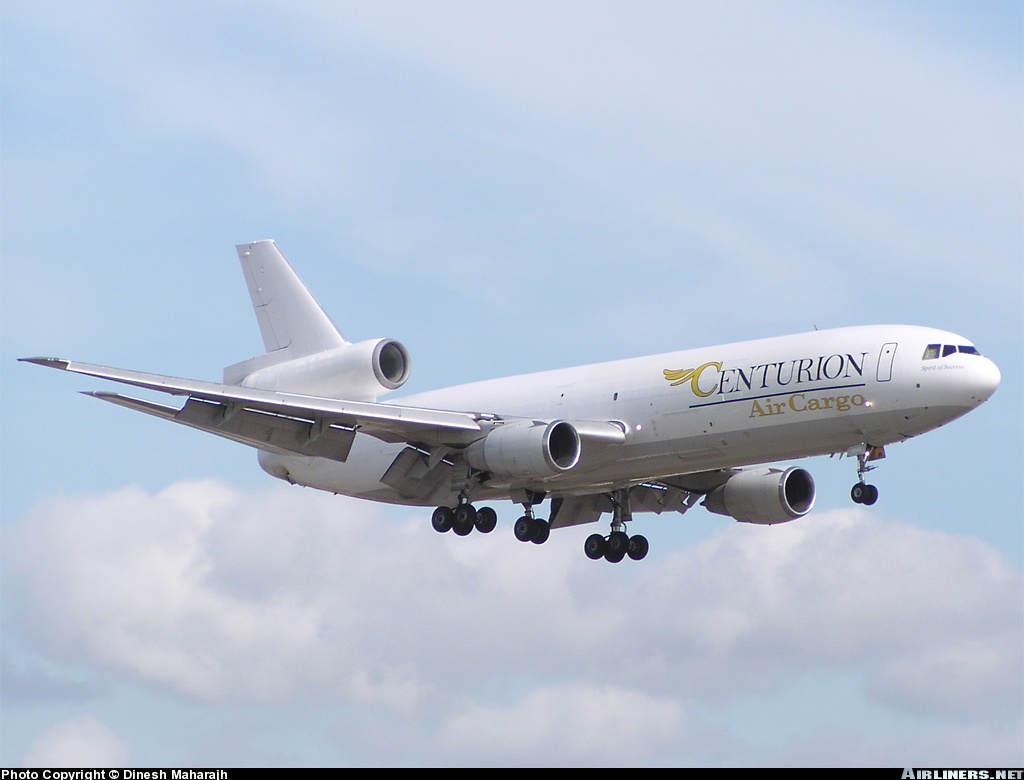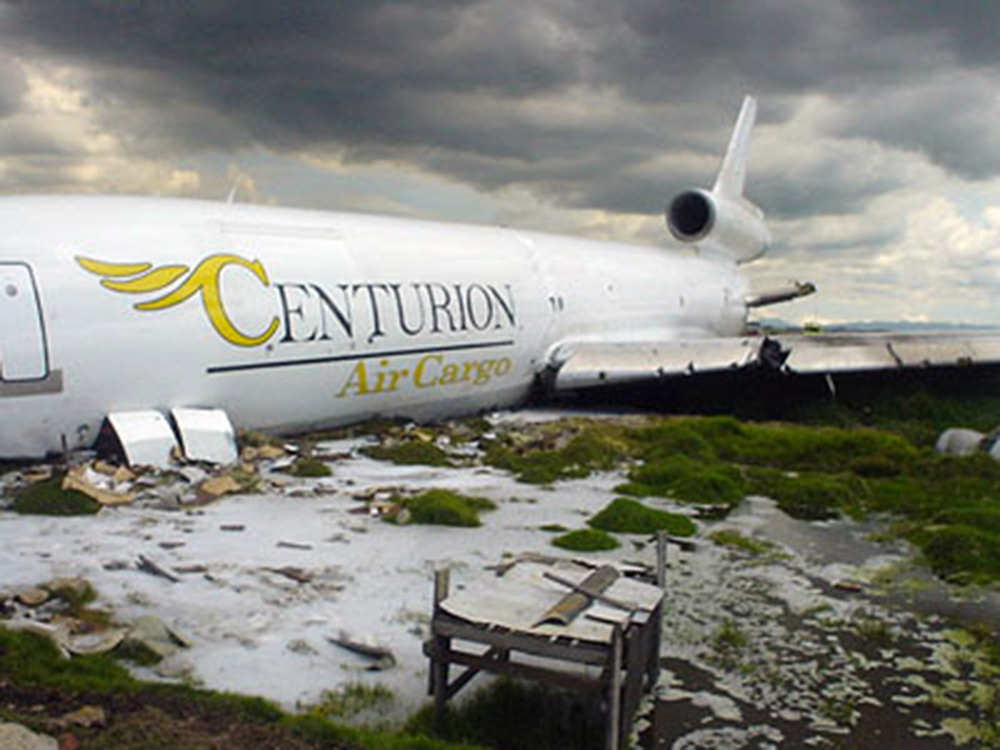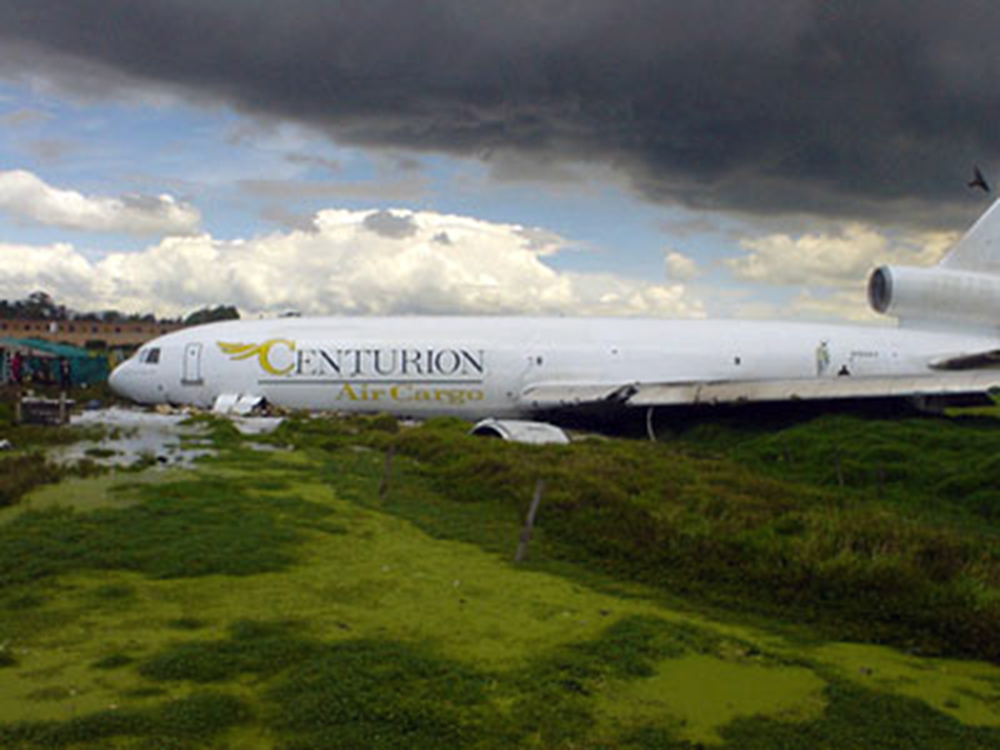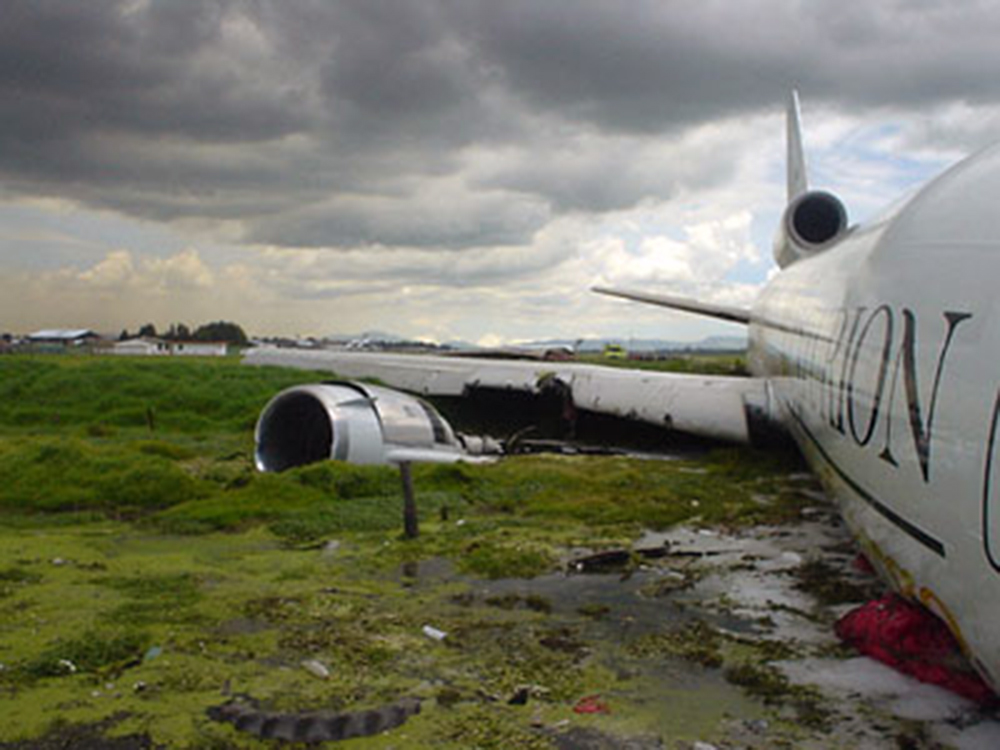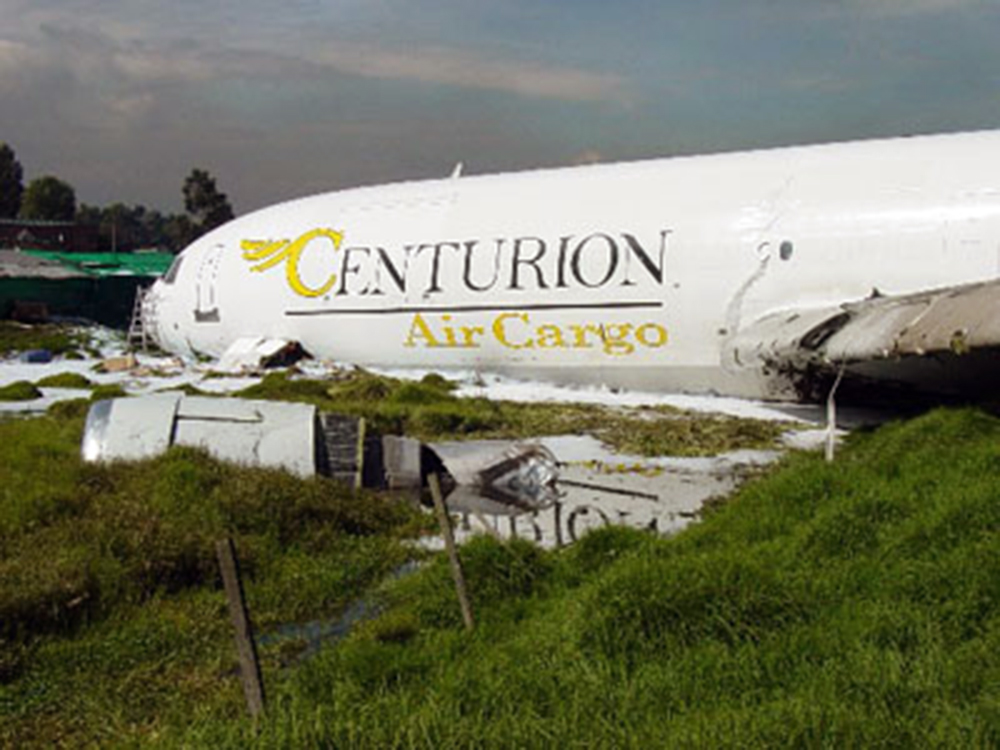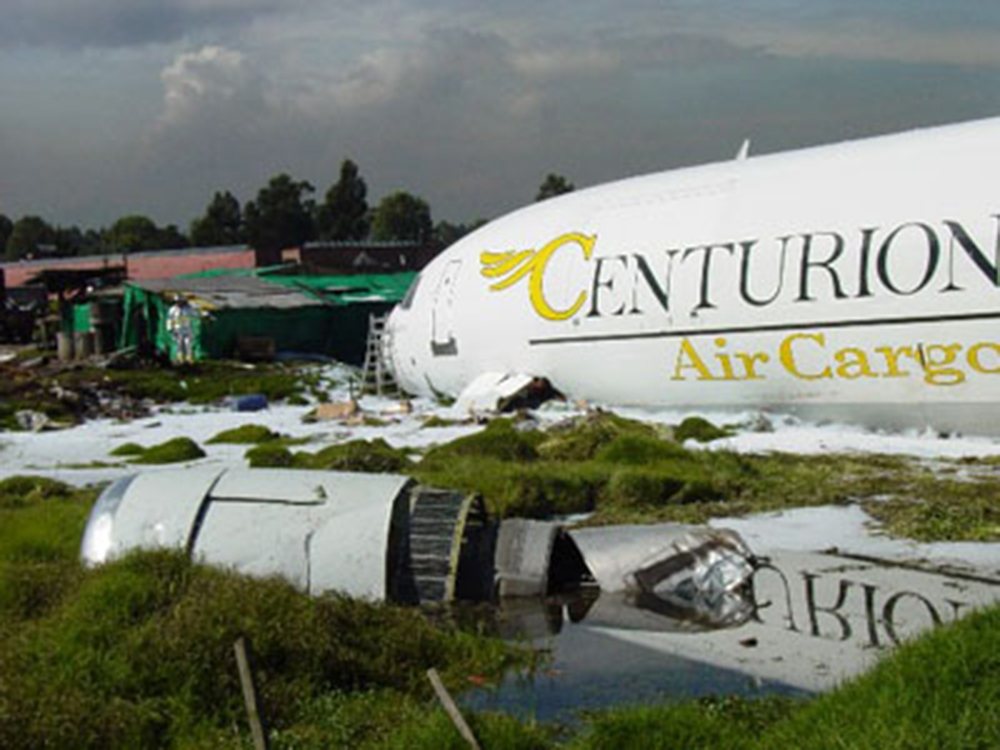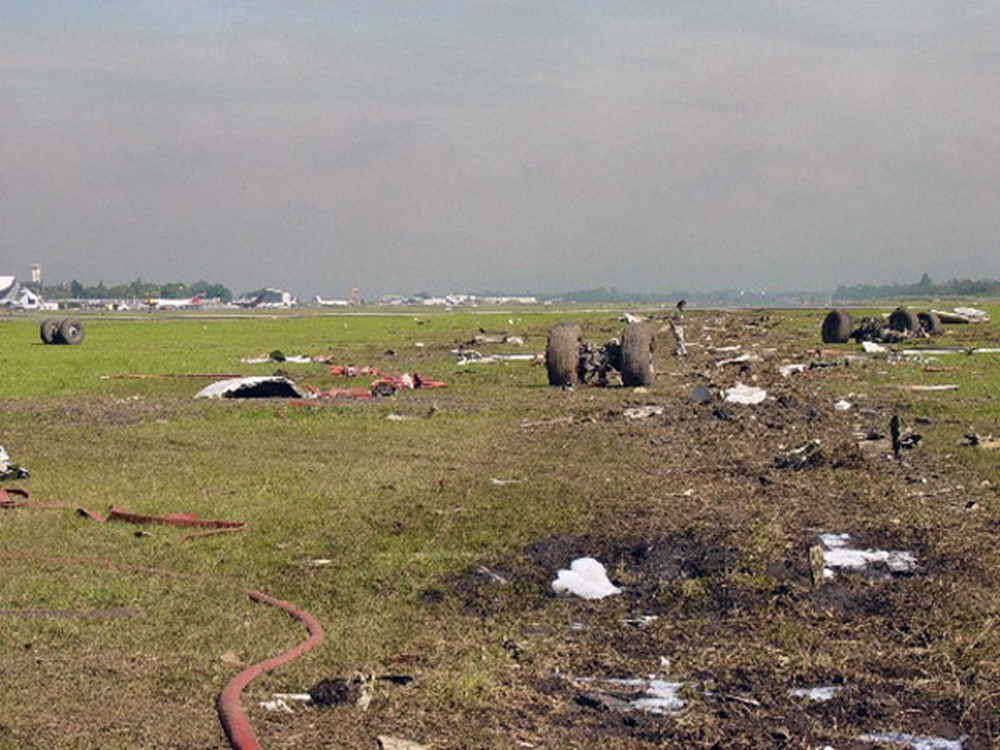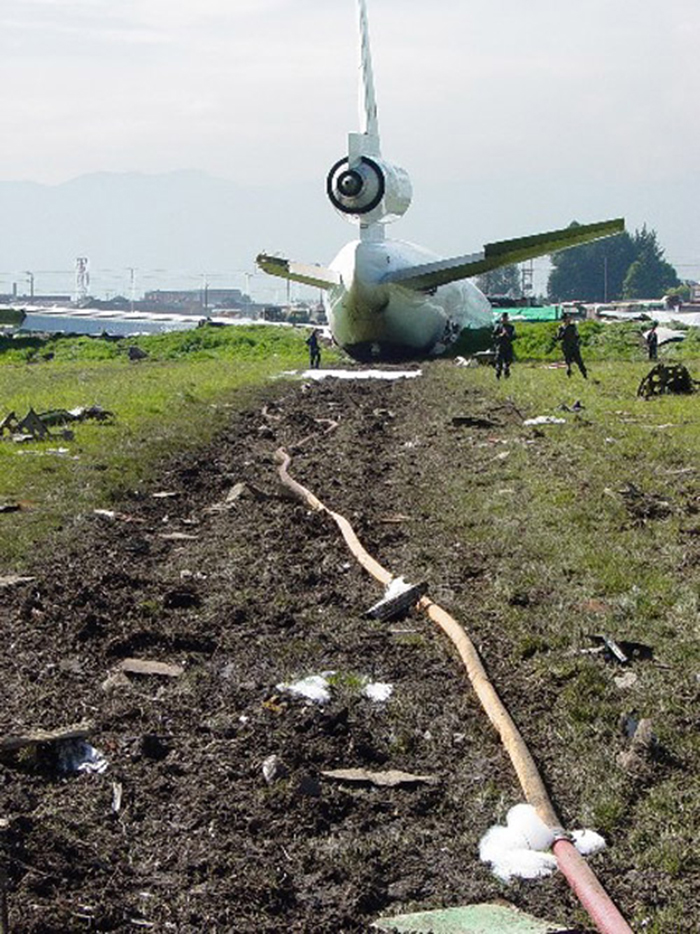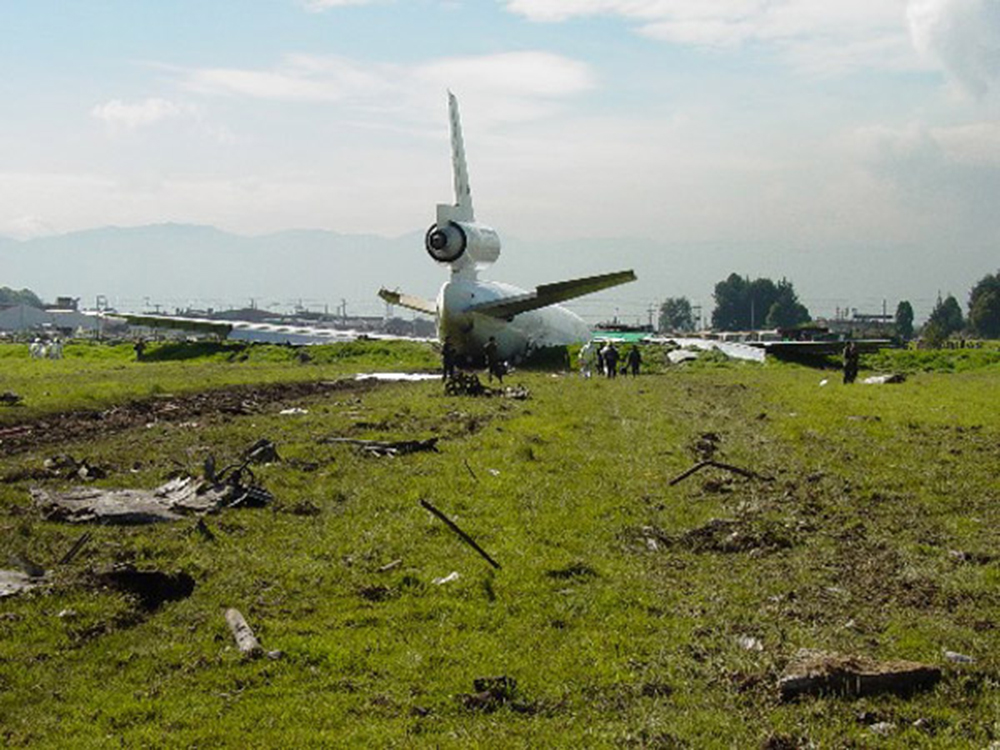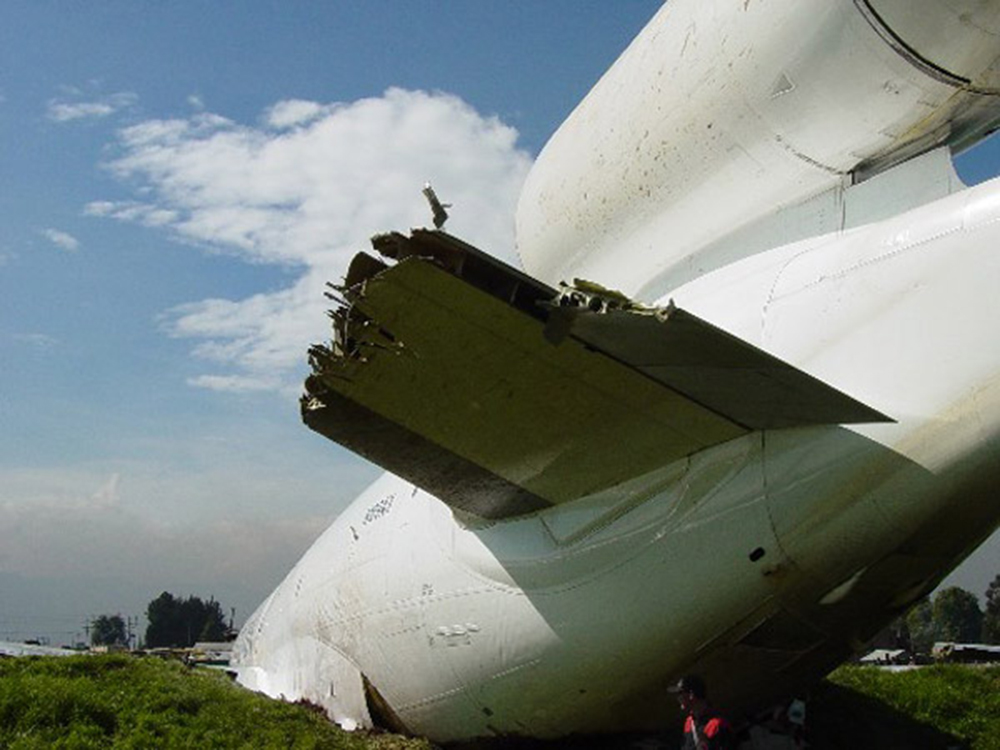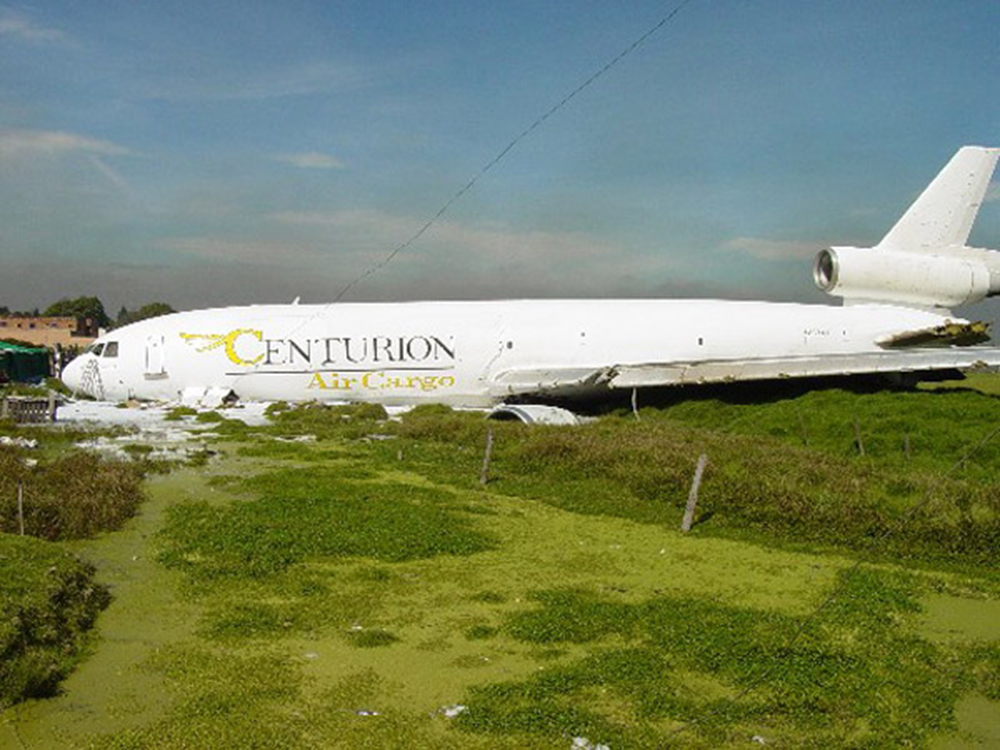Country
Operator Image

Crash of a McDonnell Douglas MD-11F in Campinas
Date & Time:
Oct 13, 2012 at 1852 LT
Registration:
N988AR
Survivors:
Yes
Schedule:
Miami - Campinas
MSN:
48434/476
YOM:
1991
Flight number:
CWC425
Crew on board:
3
Crew fatalities:
Pax on board:
0
Pax fatalities:
Other fatalities:
Total fatalities:
0
Copilot / Total hours on type:
1368
Circumstances:
The airplane took off from Miami International Airport (KMIA), destined for Viracopos Airport (SBKP), with two pilots and a mechanic on board, on a non-regular cargo transport flight. The flight was uneventful up to the moment its landing in SBKP. On the approach for landing on runway 15, the crew performed the IFR ILS Z procedure. The weather conditions were VMC, with the wind coming from 140º at 19kt. When the aircraft was granted clearance to land, the wind strength was 20kt, gusting up to 29kt. The copilot was the Pilot Flying (PF), and the captain was the Pilot Monitoring (PM) at the moment of landing. When the aircraft touched down on the runway after the flare, the left main landing gear collapsed, causing the aircraft to skid on the runway for approximately 800 meters before stopping. There was substantial damage to the left main gear assembly, to the left wing, and left engine. The aircraft stopped within the runway limits. All three crew members were uninjured.
Probable cause:
It was determined that the “the landing gear failed due to overload in the cylinder structure”. The fracture started in the rear section of the cylinder in a connection hole which served as a tension concentration point, and ended in the front part of the cylinder with its breakage into two parts. Following a failure of the right main gear upon landing in Montevideo on 20 October 2009, the right main landing gear was replaced by VARIG Engineering & Maintenance (VEM), but the organization responsible for the research of damage, the specification of the services necessary for the restoration of airworthiness, and the provision of the services that enabled the restoration of the aircraft to an airworthy condition was not identified. The same aircraft parts were subjected to metallurgical analysis at the Boeing Long Beach Materials, Processing and Physics [MP&P] Laboratories, in Huntington Beach, California, USA; and the technical report issued by Boeing highlighted that in one of the points of origin of the failure, the analysis had identified characteristics similar to a pre-crack point, which would have begun earlier, probably due to overload. In the tasks that led to the restoration of the aircraft airworthiness after the accident in Uruguay in 2009 (Hard-Landing), and also in subsequent periodic inspections, the existence of pre-crack traces resulting from a previous overload condition may not have been identified, something that could have resulted in a point of stress concentration.
Final Report:
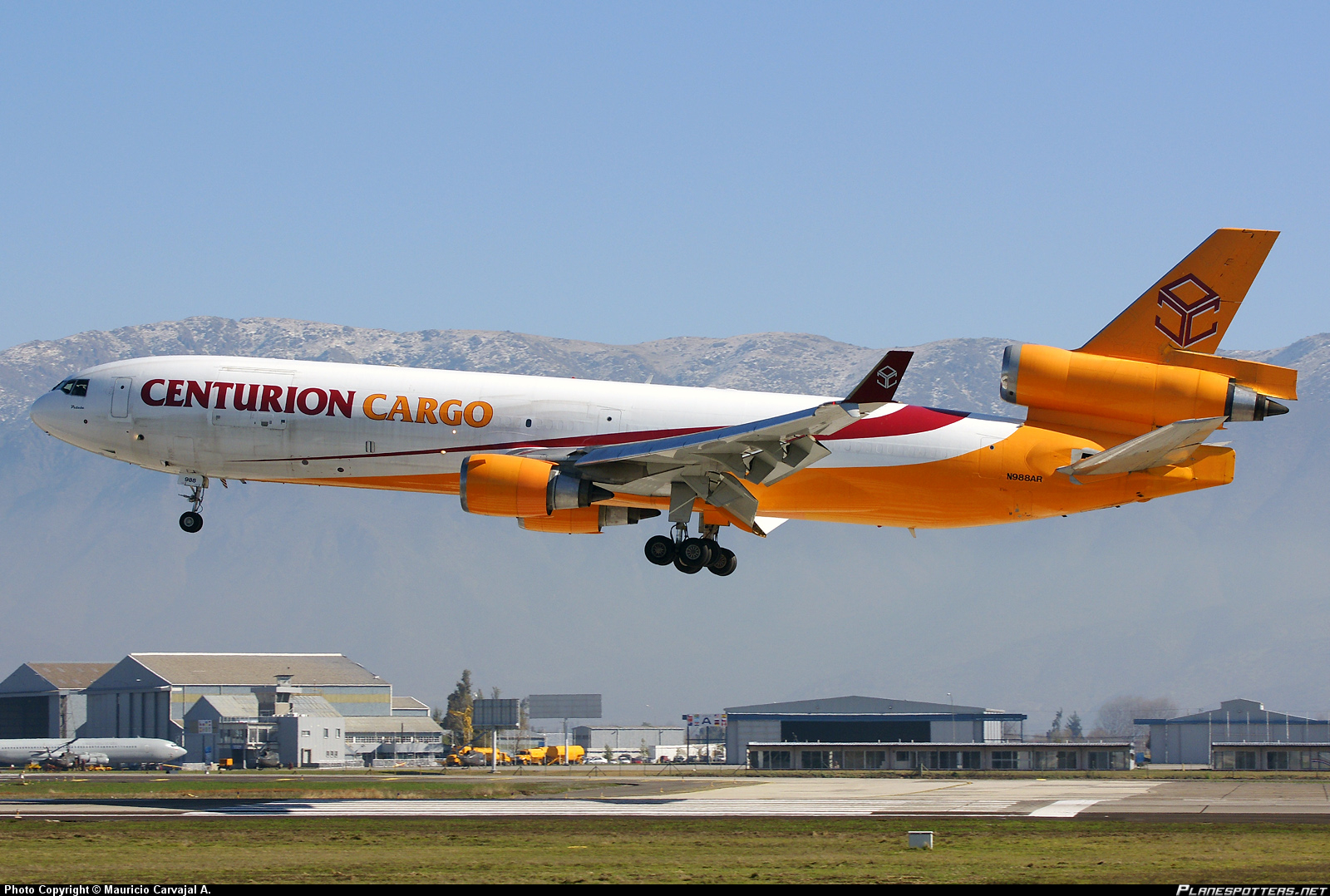
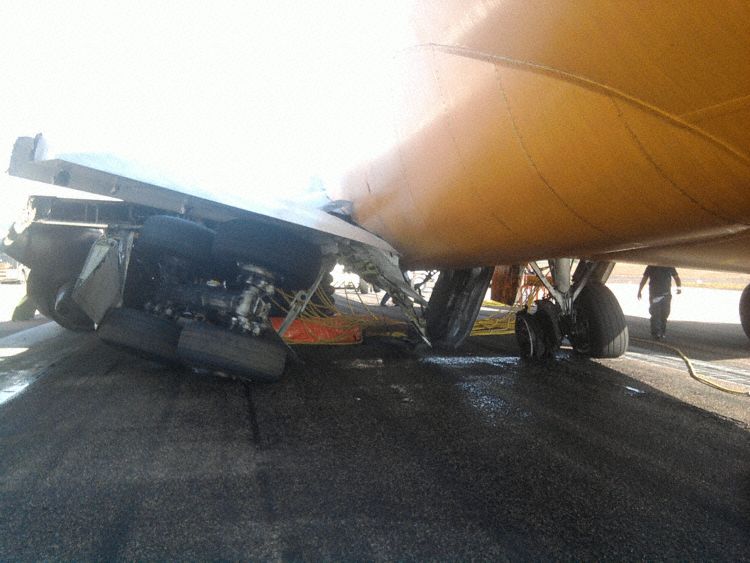

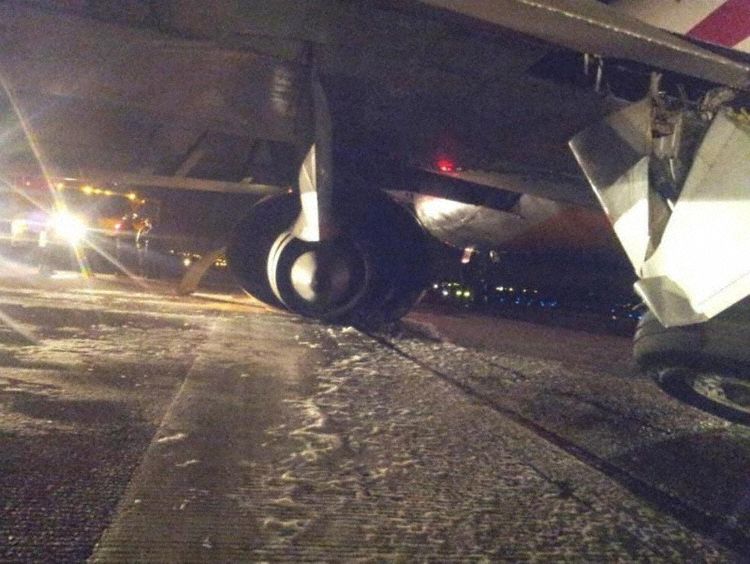
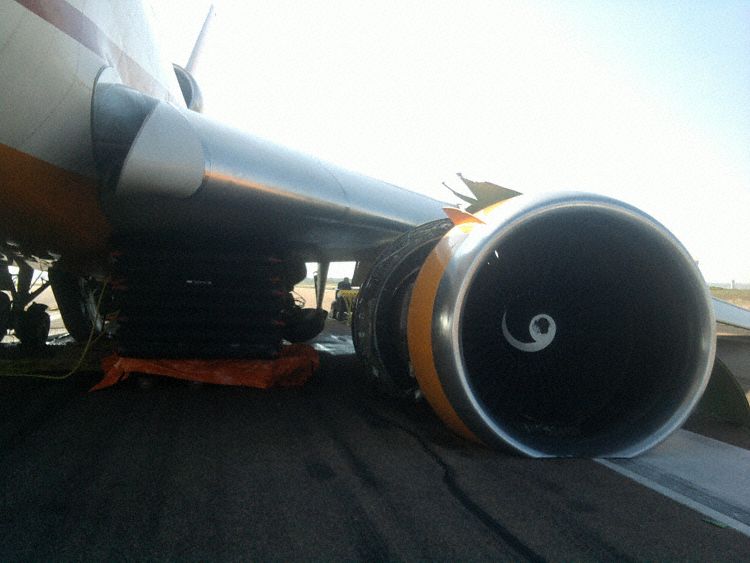
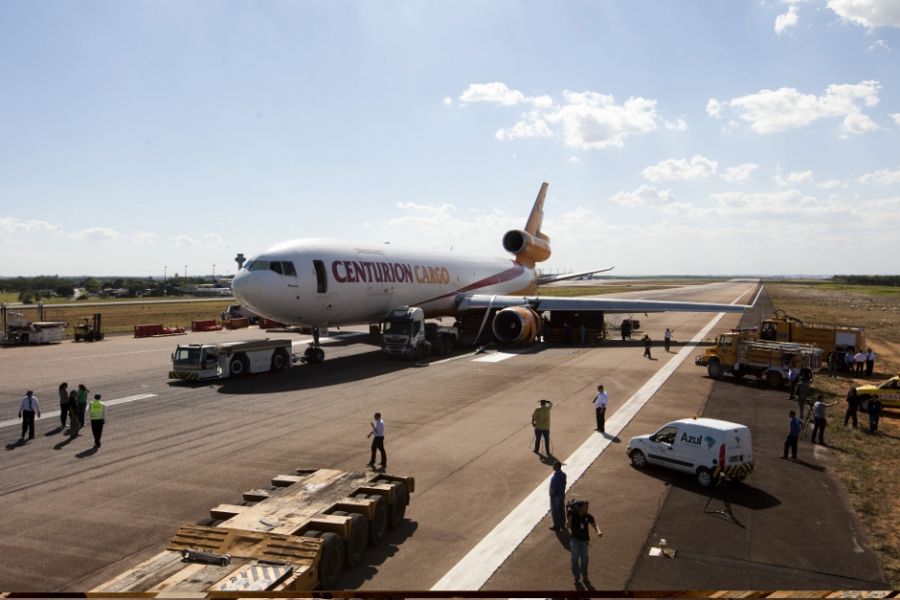

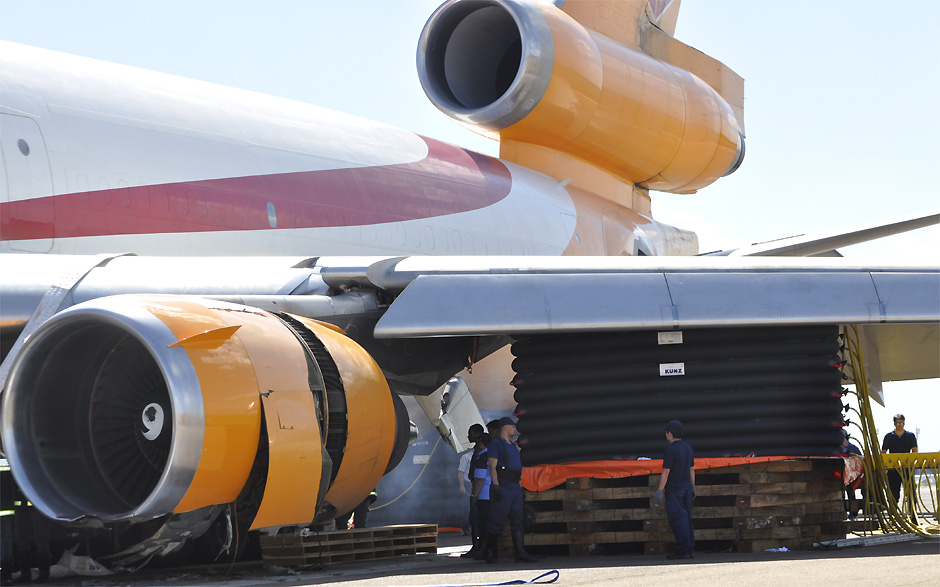
Crash of a Douglas DC-10-30F in Bogotá
Date & Time:
Apr 28, 2004 at 0356 LT
Registration:
N189AX
Survivors:
Yes
Schedule:
Miami – Bogotá
MSN:
48277
YOM:
1981
Crew on board:
3
Crew fatalities:
Pax on board:
0
Pax fatalities:
Other fatalities:
Total fatalities:
0
Aircraft flight hours:
77864
Aircraft flight cycles:
12224
Circumstances:
Following an uneventful cargo flight from Miami-Intl Airport on behalf of Lineas Aéreas Suramericanas, the crew started a night approach to Bogotá-El Dorado Airport. On final, the aircraft was unstable and too low when the GPWS alarm sounded five times. The captain increased engine power and elected to gain height, causing the aircraft to continue over the glide. At an excessive speed of 180 knots, the aircraft landed 1,500 feet past the runway 13L threshold (runway 13L is 3,800 metres long). After touchdown, the crew started the braking procedure but unable to stop within the remaining distance, the aircraft overran. It lost its undercarriage, collided with the ILS equipment, lost both engines n°1 and 3 and eventually came to rest few hundred metres further in a grassy area. All three crew members escaped uninjured while the aircraft was damaged beyond repair.
Probable cause:
Departure from runway 13 left the El Dorado airport as a result of a landing with a speed of 180 knots and 1500 feet from the threshold, during which the spoilers were not used and in which there was hydroplaning by the main landing gear making the braking action less than expected. The decision of the crew to continue the approach despite the fact that this was not stabilized in accordance with the criteria described in the manual of operations of the airline. The omission of points in the checklist and call out from the crew that resulted in a lower alert situation facing the parameters of the approach and monitoring the operation of key systems such as the extension of spoilers after the landing. The non-response to the ground proximity warning system that is sounded for at least five times during the final approach in two different modes.
